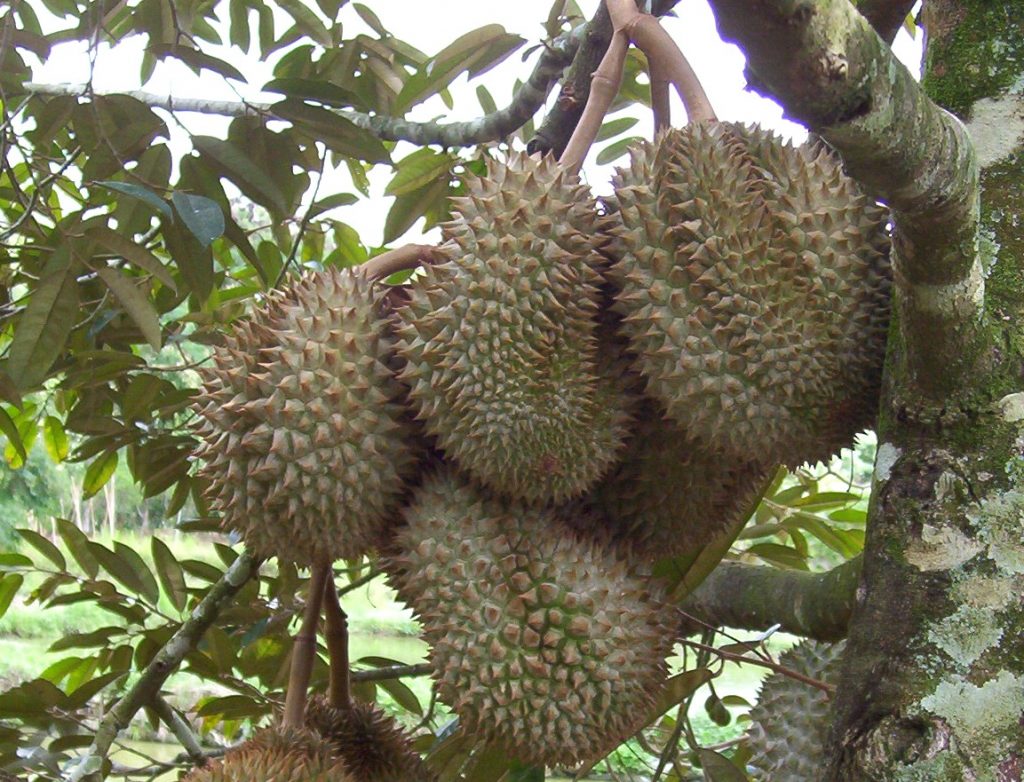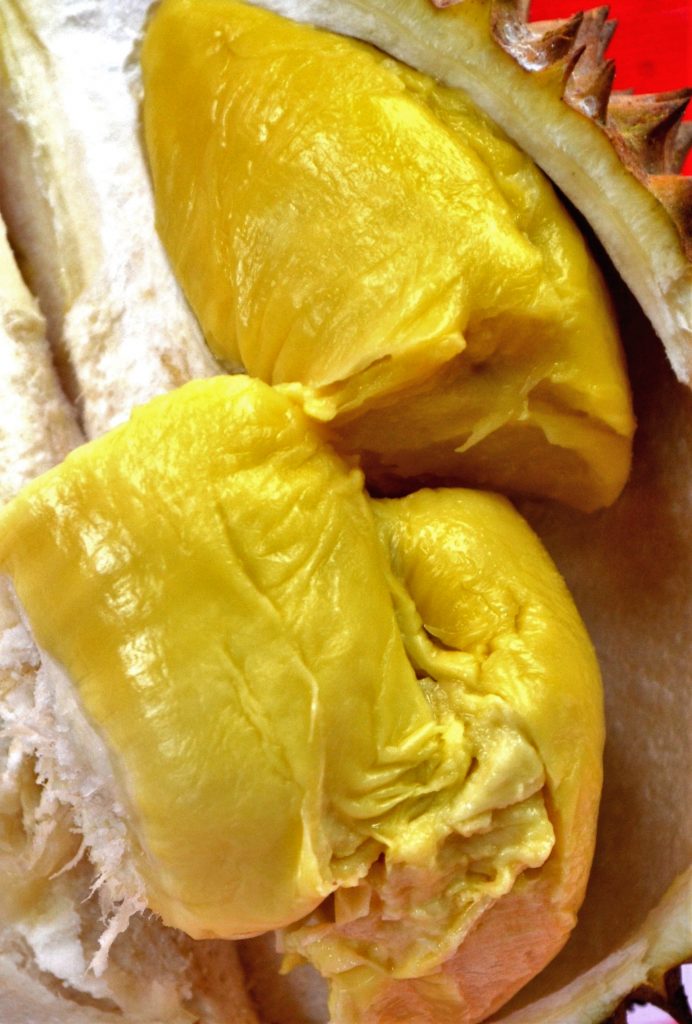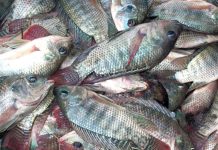If Filipino farmers are looking for a tree that will not only address the problem of climate change but also give them a decent income, then they should consider planting durian in their farms.

Respected atmospheric scientists claim that one way to curb the release of carbon dioxide and other greenhouse gases into the atmosphere is by sequestering them. Trees have been identified as the most capable of doing so.
Science says that by means of photosynthesis, trees absorb carbon dioxide and then store the carbon. This process is called carbon sequestration.
“Carbon is stored in the leaves, stems, and other parts of plants when they absorb carbon dioxide from the atmosphere and use it to grow,” explains the United States Department of Agriculture (USDA). “Trees are very important for carbon sequestration because they live a long time and, therefore, store their carbon for many years.”
Instead of planting just any kind of trees, some experts are recommending durian as Davao region is noted for this fruit. “The best tree to plant is durian,” says Jethro P. Adang, the new director of the Mindanao Baptist Rural Life Center (MBRLC) in Kinuskusan, Bansalan, Davao del Sur. “The durian does not only help sequester carbon dioxide but it also bears fruits.”
The durian fruit is in big demand not only in the Philippines but in other countries as well, particularly those with overseas contract workers and Filipinos who have already changed their citizenship.
“Durian, of course,” replied Dr. HIlario Lapeña, a Filipino physician who now resides in Canada, when asked what is his most favorite fruit. “Nothing beats it. I have tasted lots of exotic fruits but I still go back to my all-time favorite – durian. Friends who used to say that they hated it are now converts.”
There’s money in growing durian. You better ask Atty. Antonio B. Partoza, Jr., who appeared in the cover of the prestigious Agriculture Magazine, which is edited by no less than Zac Sarian, a recipient of Ramon Magsaysay Award (touted to be the Nobel Prize of Asia).

Partoza never thought the fruit that smells like hell but tastes like heaven will bring him some clout and prestige when he ventured into durian farming in 1987. Being the fruit basket of the Philippines, he thought of durian – particularly the “arancillo” variety – as a way of promoting Davao into the world.
“His perseverance to showcase Davao’s pride through the continued production of homegrown Durian has gained the recognition of the agricultural industry,” someone commented. Aside from Agriculture magazine, he was featured in various local and national papers and even the in-flight magazine of SilkAir.
What makes his durian fruits unique is that they are taken from trees that are grown organically. As one of the pioneering advocates of natural farming, he uses indigenous materials from the farm as fertilizer instead of relying on expensive commercial chemical fertilizer. The success of his venture made him to earn the sobriquet, Durian King of Davao.
A lot of farmers tried to follow suit but still the demand is so huge that the volume cannot cope up with. China, with a population of 1.4 billion, the demand is humungous. In 2016, some 303,430 metric tons of durian worth US$394 million were exported to China, according to the United Nations Commodity Trade Statistics database.
Although the fruit is banned in most of the world (because of its “foul-smelling odor”), there is an increasing demand for it in the export market. Durian is called as “exotic tropical fruit” in North America and Europe where customers offer premium price. Durian is also highly regarded in other Asian countries, including Japan and Singapore.
To meet the huge demand of durian in the China market, the regional office of the Department of Agriculture recently launched the Durian 500 Project in Davao City. The DA-XI’s High Value Crops Development Program (HVCDP) implements the project in tandem with the Davao City Agriculture Office.

“The project aims to expand durian production up to 500 hectares for the next three years in Baguio District, which is the leading durian production area not only in the city but also in the region,” said the press release, authored by Noel T. Provido.
Aside from its climate and rich volcanic soil, the Baguio District is also very accessible to durian buyers and processors. The HVDCP will provide 50,000 durian seedlings to interested farmers in the area. It takes about 5 years before the trees will bear fruits.
“It is about time to expand durian production in Davao Region since for the past years, the production area, as well as the volume of produce, did not increase despite the fruit’s continuing and increasing demand in the local and export market,” Melani Provido, the HVCDP coordinator, was quoted as saying.
Durian is one of the most controversial fruits the world has known. Opinions on it differ greatly. To some, the fruit “smells like hell.” But to others, durian “tastes like heaven.”

The British naturalist Alfred Russel Wallace famously described the fruit as “a rich butter-like custard highly flavored with almonds, but intermingled with it come wafts of flavor that call to mind cream-cheese, onion sauce, brown-sherry, and other incongruities.”
Old traveler Linchott wrote: “This fruit is of a hot and humid nature. It smells like rotten onion, but once tasted, everybody will like it.”
In the 1912 issue of the Philippine Journal of Science, O.W. Barrett noted: “The chemical body which is responsible for the very pronounced odor is probably one of the sulfur compounds with some base perhaps related to that in butyric acid; it is not an oil nor a sugar, not a true starch but a substance new to the organic chemist.”
There are several varieties of durian grown in the Philippines. The most important ones, commercial-wise, according to the Laguna-based Philippine Council for Agriculture, Forestry and Natural Resources Research and Development, are Chanee, Mon Thong, Alcon Fancy, Arancillo, Atabrine, Duyaya, GD 69, Lacson Uno, Mamer, and Puyat.
Unlike mango, durian is a seasonal fruit and generally it is eaten fresh. The edible portion, known as the aril (usually referred to as the “flesh” or “pulp”) only accounts for about 15-30% of the mass of the entire fruit. The ripe pulp can also be made into jam, preserve (often packed like long sausages), candies, and other sweets.
When unripe, durian can be cooked like a vegetable — including frying unripe slices just like potato chips to make uncommonly good durian snack chips. In Thailand, a popular delicious dessert treat is often sold from roadside cart vendors. It is a cup of sweet sticky rice flooded with very sweet thin syrup of the juice of fresh coconut blended with a little fresh durian, sweetened with sugar cane juice.
Meanwhile, the UN World Meteorological Organization (WMO) said carbon dioxide levels, which were at 357.0 parts per million when the Statement on the State of the Global Climate was first published in 1994, keep rising. In 2017, the carbon dioxide level was 405.5 parts per million.

“For 2018 and 2019, greenhouse gas concentrations are expected to increase further,” said WMO, whose statement includes input from US meteorological and hydrological services, an extensive community of scientific experts, and United Nations agencies.
With this in mind, Adang is urging Filipino farmers to plant durian. “Let’s plant more durian or other fruit trees,” he says. “Aside from providing work for people who sells fruits, we are also helping our environment from heating too much.”






